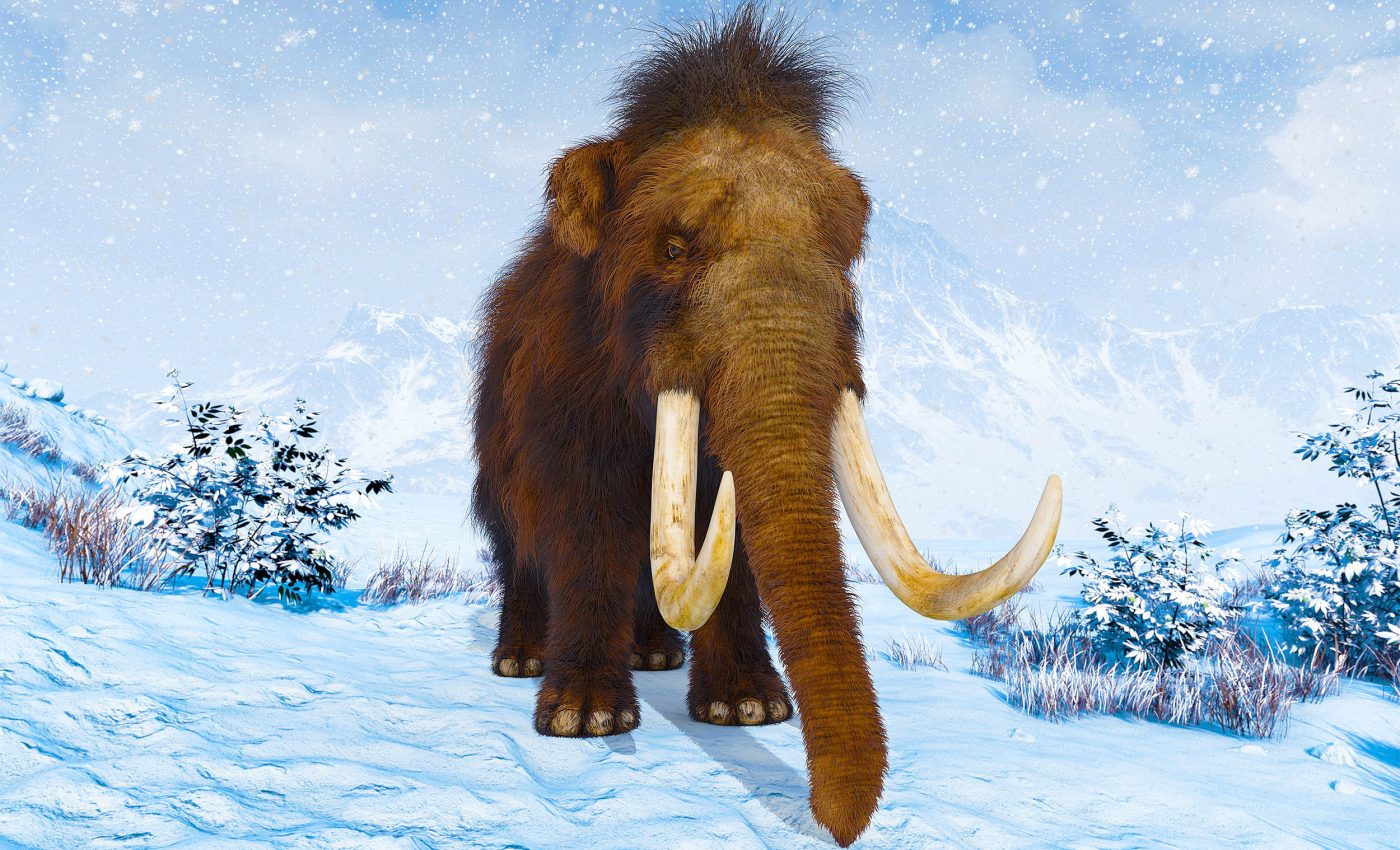
Woolly mammoth freeze-dried skin has active DNA after 52,000 years
Scientists have just unlocked one of nature’s most colossal enigmas – a 52,000-year-old woolly mammoth’s genome and 3D chromosomal structures.
This incredible achievement is first of its kind for any ancient DNA sample, courtesy of the combined efforts of an international research team.
Woolly mammoth DNA discovery
The project led by is Dr. Erez Lieberman Aiden, Director of the Center for Genome Architecture at Baylor College of Medicine. Dr. Aiden, with his team, has assembled the largest scale of ancient DNA fragments ever recorded.
“This is a new type of fossil, and its scale dwarfs that of individual ancient DNA fragments—a million times more sequence,” says Dr Aiden.
He also held the distinction of determining the first-ever karyotype (complete set of chromosomes) from an ancient sample.
But how did they do it? It involved a constant hunt for perfectly preserved ancient DNA samples and a unique method called Hi-C.
After five years and countless attempts, the researchers finally hit the jackpot in 2018 when they unearthed a well-preserved woolly mammoth in northeastern Siberia.
They believe the mammoth’s internal structure is so well-preserved because it was naturally freeze-dried after it died.
Freeze-dried skin sample
The team of scientists meticulously extracted DNA from a skin sample taken behind the mammoth’s ear. They utilized the Hi-C method to detect the interacting DNA sections. It’s sort of like piecing together a three-billion-piece puzzle.
“Imagine you have a puzzle that has three billion pieces, but you don’t have the picture of the final puzzle to work from,” says corresponding author Marc A. Marti-Renom, an ICREA research professor and structural genomicist at the Centre Nacional d’Anàlisi Genòmica (CNAG) and the Centre for Genomic Regulation (CRG) in Barcelona.
“Hi-C allows you to have an approximation of that picture before you start putting the puzzle pieces together.”
Results from woolly mammoth DNA
A result of remarkable precision, the analysis not only disclosed that woolly mammoths had 28 chromosomes – just like Asian and African elephants today, but also retained a substantial amount of physical integrity and detail within the fossilized chromosomes.
By investigating the compartmentalization of genes within the nucleus, the team pinpointed genes that were either active or dormant within the mammoth’s skin cells.
It turns out, the mammoth skin cells flaunted distinct gene activation patterns when compared to Asian elephant’s skin cells, particularly for the genes related to its woolly-ness and cold tolerance.
Now we have a woolly mammoth tissue that tells us which genes were switched on and off some 52,000 years ago. That’s a massive stride in the field of ancient DNA.
“For the first time, we have a woolly mammoth tissue for which we know roughly which genes were switched on and which genes were off,” says Marti-Renom.
“This is an extraordinary new type of data, and it’s the first measure of cell-specific gene activity of the genes in any ancient DNA sample.”
Challenges along the way
The journey to sequencing the woolly mammoth genome was riddled with challenges. Ancient DNA is notoriously fragile and often contaminated with modern DNA. This made extraction and analysis particularly daunting.
The cold Siberian environment played a pivotal role in preserving the woolly mammoth’s DNA. It reduced degradation and contamination.
Nevertheless, the team faced difficulties. They struggled to distinguish between the mammoth’s DNA and other genetic material present in the sample.
Advanced bioinformatics tools and rigorous verification protocols were essential in overcoming these obstacles.
Implications for extinct species
This achievement extends beyond woolly mammoths and could significantly impact the study of other extinct species.
By applying similar methods, scientists might uncover valuable genomic information from various extinct organisms. This can provide insights into their biology, evolution, and the reasons behind their extinction.
Understanding these factors could inform contemporary conservation strategies. This might help prevent the extinction of currently endangered species.
This discovery could be a key player in today’s efforts to bring back the woolly mammoth.
So, don’t be surprised if you hear more about woolly mammoths in the future. After all, science just made a mammoth leap forward.
The study is published in the journal Cell.
—–
Like what you read? Subscribe to our newsletter for engaging articles, exclusive content, and the latest updates.
Check us out on EarthSnap, a free app brought to you by Eric Ralls and Earth.com.
—–














